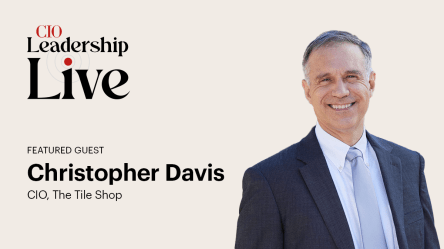Change management isn’t always a strength of IT orgs. It’s time to flip that script by asking hard questions to hone how IT facilitates change adoption to achieve desired business outcomes.

Technology-driven change is happening more frequently than ever, yet success is hardly guaranteed.
Just one in five organizations achieved the expected benefits from their transformation initiatives or projects 75% or more of the time, according to research firm Gartner.
“The rest are expensive failures,” says Cynthia Phillips, Gartner senior director. “As change velocity and cost pressures have increased in parallel this year, organizational change management is a critical activity anytime success is predicated on people adopting change.”
Niel Nickolaisen has led the selection, implementation, and use of various enterprise business systems, processes, and methodologies over a multi-year career in IT leadership. “As I reflect on every one of those, in only a few cases did the challenges come from the technology or the project management. The struggles came from requiring humans to change their behavior,” says Nickolaisen, now director of strategic engagements at JourneyTeam. “As one of the species that is the most able to adapt to changing conditions and situations, we are abysmal at doing so.”
Effective change management increases the likelihood of technology adoption in service of business goals. The practice hasn’t historically been a strength of IT organizations, but it’s a must-have today.
“Change management is no longer a side activity or a soft skillset,” says Joe Topinka, veteran IT leader and founder of CIO Mentor. “It is a core performance discipline that determines whether new initiatives deliver business value. Poor change management not only delays results; it erodes trust in IT and makes future change more difficult.”
Following are questions IT leaders should answer to ensure their change management efforts meet the needs of today’s rapidly evolving technology and business environment.
Are we starting change management early enough?
Organizations often fail to plan for adoption until late in a project, hoping communication and training at the end will be enough. It rarely is.
“The most successful transformations integrate change management from the beginning, building it into project milestones, leadership communication, and success metrics,” Topinka says.
Topinka points to a large ERP initiative in which the project team addressed concerns early, kept momentum, and saw high adoption in the first weeks after launch thanks to the inclusion of change management efforts from the get-go.
“In earlier projects without this approach, adoption lagged for months,” Topinka says.
Has our communication plan been crafted to achieve our goals?
IT leaders can’t communicate early enough or often enough when it comes to implementing a technology change, says Colin McCarthy, director of digital transformation at Promevo. It has to go beyond a few emails, which users likely ignore.
“Communication about a change has to be done via many and all means possible: company meetings, team meetings, company newsletters, company notice boards, even desktop backgrounds or login screens,” McCarthy says.
And it should be a two-way street. For example, IT leaders can offer amnesty to encourage users to share what they’ve been doing with systems outside IT’s control.
“Everyone knows shadow IT exists,” says McCarthy, “and this is the moment to ask questions about it, so the change doesn’t damage the operation of the company for both sanctioned IT systems and shadow IT systems.”
When working with an in-house IT team on migrating from a legacy system to Google Workspace, McCarthy and the team discovered that various business units had already set up many different domains and Google Workspace tenants. Thanks to creating an open dialogue, this issue was discovered early and built into the plan.
“My advice to all IT leaders looking to take on a change management project is to be open and nonjudgmental and collect all the information they can from their users,” McCarthy says.
Where should I focus my leadership efforts to have the greatest impact?
Gartner’s research found that CIOs in high-performing organizations are significantly more likely to lead or participate in executive steering committees for change initiatives, report progress to fellow CXOs and/or the board, and work across functions to remove roadblocks and raise awareness.
“Close, cross-functional coordination is key,” says Gartner’s Phillips. “Today’s CIOs need to cultivate a franchised delivery partnership with their peers to effectively lead change.”
Does our change strategy factor in the unexpected?
Even the best projects can have unanticipated consequences, says Larry Bonfante, longtime CIO and founder of CIO Bench Coach.
“Not factoring in how the proposed changes might negatively impact the people you expect to adopt the change is a recipe for disaster,” Bonfante says. “Change is challenging enough when things go right; it’s really difficult when the change creates negative impacts you didn’t count on.”
Bonfante also advises making sure IT has enough “good will” built up with any community that may be impacted to weather any issues that arise.
Am I sending the right message about change?
Gartner’s Phillips warns CIOs to avoid the phrase, “Change is hard.”
“To the contrary, humans are wired for change. We buy into change easily and often,” says Phillips. The problem isn’t change itself, but perceived dissonance. “What we hesitate to buy into is change that is sold to us as an upgrade yet feels like a downgrade.”
IT leaders should illustrate what’s in it for users, which can be challenging to do for all changes and stakeholders. In those cases they should make clear what the change means for the larger organization.
“For example, when an organization shifts from multiple solution vendors to a single, enterprise solution, there will be stakeholders who will lose the solution they know and like,” Phillips says. “In that case, it’s best for CIOs to acknowledge compromises while relating what the organization needs, why the change is needed now, and how the stakeholders can get involved. Most employees will accept change at a cost to themselves when they understand the collective benefit.”
Do we have change advocates in the right places?
The most influential champions for change are often not executives, but respected peers on the front lines whom colleagues trust, Topinka says. For one CRM rollout he was involved in, a frontline sales rep became the most effective change advocate simply by talking about how the system made his work easier.
“His endorsement moved the needle far more than any leadership announcement,” Topinka says. “Respected peers can make or break adoption.”
CIO Bench Coach’s Bonfante says he always made sure to leave behind “disciples” of any proposed change “to reinforce the benefits of the change when I wasn’t around to pump them up. Having people others trust from their own neck of the woods embrace the change makes it easier to ensure their buy-in.”
How can we make users comfortable before unleashing the change?
“Humans prefer the familiar to the comfortable and the comfortable to the better,” Nickolaisen quips. “If I want to get humans to leave behind the familiar and accept and embrace the better, … I need to make the better both comfortable and familiar.”
Nickolaisen, who keeps this in mind when designing project plans, recalls replacing multiple systems scattered across various departments with a single, common system — an effort that had failed multiple times due to user resistance. Working with a core group of reps from each department, Nickolaisen’s team presented the group with rapid prototypes of the new business rules, process, and system each day, seeking feedback to review and implement. The IT team refined the production version over six weeks and those departmental representatives became evangelists for the new system and processes.
“This created an appetite [for] the system,” Nickolaisen says. Once the production configuration was in a good state, IT launched a “road show” introducing the new system and process to all departments. “We went from no one using the system to the entire organization using the system in a matter of months,” Nickolaisen recalls.
Does IT really understand the business pain points we’re attempting to solve?
It’s easy to assume problems are obvious or well-documented. “In reality, process documentation rarely tells the full story,” says Topinka, recalling one instance in which a project team assumed speed of access was the main issue for sales reps, but shadowing them revealed that offline mobile access was the real gap. “Fixing that turned initial resistance into enthusiastic adoption.”
Before a massive overhaul of a tool used by a large customer service team, Nickolaisen and his team spent several hours a day sitting with the customer service professionals to observe how they used the legacy tool. IT asked about pain points, brainstormed solutions with them, and “walked a mile in their shoes.”
“This made them familiar and comfortable with us and our intentions. As we designed the new system, we showed them early prototypes, making them familiar, and let them use sandbox versions, making them comfortable,” Nickolaisen says. The result? Rapid adoption.
Do we update our change management plans frequently enough?
“A lot of CIOs ask me how they can overcome resistance, but what’s needed isn’t to overcome resistance — it’s to uncover resistance,” Gartner’s Phillips says. “That comes from asking the right questions, surfacing issues, finding solutions, and adapting plans.”
According to Gartner’s research, the most successful organizations continuously update their change plans based on employee response, whereas lower-performing organizations update change plans occasionally or rarely.
Are we cultivating a conflict-adept organization?
An effective organizational change management program is about more than the change plan. It involves fostering a change-ready environment.
Conflict-averse teams have trouble dealing with differing opinions, which stifles problem-solving and transformation progress. To turn this around, CIOs should bring different voices to the table.
“A quick way is to include folks from other teams,” Phillips says. “In the long term, the best way to avoid an echo chamber is to hire competent people whose backgrounds differ.” Then the CIO sets direction, promotes creative friction (while not permitting personal attacks), and taps teams’ collective potential to realize change.
Can our change management strategy keep pace with technology advancement?
Big-bang rollouts over 18 months don’t cut it anymore. Instead Topinka advises breaking projects into smaller, more frequent releases — and using feedback loops to adapt each step.
“This gives business units time to absorb the changes while still delivering value months earlier than a single, all-at-once launch would allow,” he says. “The pace of technology requires smaller, faster, and continuous change.”
IT organizations and companies that thrive over the long term have learned to embrace change rather than resist it, Topinka adds. “The market will move, technologies will advance, and customer expectations will shift whether we are ready or not,” he says. “The real differentiator is how quickly and effectively we adapt. When it is embraced as a cultural strength, change becomes less about managing resistance and more about channeling energy toward new opportunities.”
See also:








